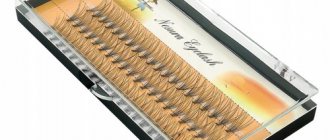Agriculture will never be abandoned by humanity, and agricultural products are always in demand. With the onset of the warm season, a busy time begins for summer residents - preparing the garden for spring sowing, because it is known that only weeds grow on unkempt soil. Work on the earth continues from the melting of the last winter snow until the first snow of next autumn.
And then heavy garden shovels and forks are used for loosening. Noble work ends not only with a well-groomed appearance of the garden, but also with an aching back and a complete breakdown the next day. It seems that there is no way out of this vicious circle.
Fortunately, human ingenuity does not stand still, and salvation has finally been invented: a miracle shovel for digging the earth.
A hand cultivator that eliminates hard work
The miracle shovel is a combination of a ripper and the most ordinary forks.
The components of this ingenious tool are extremely simple:
- A handle that controls a shovel.
- Front and back stops that give the tool stability.
- Fasteners connecting all parts.
- Forks for loosening.
- Digging forks.
The forks are connected in such a way as to move towards each other and lock like a lock, and there are stop mechanisms on the sides. The simple design of this new piece of equipment makes it easy to break up clods of earth, greatly simplifying and facilitating work in the garden. The emphasis is placed specifically on the forks of the tool, which perform the main function.
The miracle shovel plows the ground shallowly (up to 20 cm), which makes it simply an indispensable device. With its help, you can care for both large and small areas; even difficult soil is subject to it. She does not have a conventional bayonet shovel, which means that monotonous digging in a half-bent position is eliminated. Moreover, the handle of the tool is generally at shoulder height and does not allow for tilting in principle.
A hand cultivator not only loosens and breaks up the soil, but also pulls out the roots of weeds. It makes it easy to remove root vegetables and potatoes without damaging their integrity.
Expert opinion
Kuznetsov Vasily Stepanovich
The miracle shovel was invented and patented in our country. It is believed that it was invented by a priest and made into a mass product by businessman A.N. Bessonov. These products are produced in Chelyabinsk, on, and Volber developed Krota.
The working principle of the miracle shovel
Thanks to minimal physical effort, the instrument can be used by people with spinal diseases and pensioners. The soil is loosened by a pitchfork, and there is no need to turn it over. The back not only does not participate in the process, but generally remains straight, excluding the endless bows and squats characteristic of ordinary digging of a garden.
The algorithm of actions is very simple:
- The cultivator handle is placed vertically, and the fork teeth rise behind it.
- The worker stands with his foot on the stop or the upper bridge of the main forks and presses with his body.
- The teeth stick into the ground and the stalk pulls back. The forks lift a layer of soil that passes through the second forks and is crushed there.
- The worker takes another step back to the uncultivated area of the garden and repeats all the steps again.
At first glance, it may seem that moving backwards is not very convenient, but there is still land ahead, ready for sowing, which does not require additional effort. Moreover, a manual ripper does not plunge a thin fertile layer into the soil, as happens with a bayonet shovel.
Moreover, this amazing invention successfully digs up potatoes, collects leaves and branches from the ground in the fall, and scatters manure. Enterprising gardeners can replace up to five gardening tools with it, without experiencing the excessive stress that was inevitably associated with cultivating land in the past.
How to make a flat cutter from a braid
Vladimir Fokin invented his flat cutter after he was unable to use a shovel. This garden tool is capable of performing many operations: loosening, weeding, hilling, mowing, forming beds, etc.
Its main purpose is to remove weeds and at the same time loosen the soil at a depth of 2-5 cm, but without turning the top layer of soil. Supporters of organic farming know that this method of loosening does not destroy beneficial microorganisms living in the soil, and therefore increases its fertility. The Fokina flat cutter is a bracket that is curved in several places at certain angles, its three cutting surfaces are sharply sharpened. The bracket is secured to the handle. It is important to learn how to work correctly with a flat cutter, then this tool will have no price.
Any movement of the flat cutter must be strictly parallel to the ground.
Here's how you can check yourself: if your back is straight when working, your body is tilted quite a bit, your thumbs on the handle look up, then everything is correct. If you hold the tool correctly, the physical load when working with it is reduced several times.
Deyler FORUMHOUSE Member
Fokin is my father-in-law. Letters of gratitude, especially from elderly people or people with poor health, stood in bags in his home.
A FORUMHOUSE member with the nickname Antol13, based on Fokin’s flat cutter, made his own tool - a super flat cutter Kosar. This super-effective tool is made from a Sable braid that was lying around the house unnecessarily.
Here's how to make a flat cutter from a braid:
- Use a grinder to cut off the stiffening collar so that during operation the flat cutter does not experience resistance and does not cling to the ground. The recommended length of the flat-cutter blade is 17 cm. But it is better to first make the blade longer; after testing, you can always shorten it.
- The recommended attack angle of the flat cutter blade is 35 degrees. If necessary, you can increase it by bending it in a vice with a gas wrench.
- After testing, adjust the length of the flat cutter and the angles of the working surfaces.
- Make grooves on the handle on both sides for better fixation.
- For better fastening and to prevent loosening, make a stainless steel clamp at the top of the tenon.
Antol13
The flat cutter exceeded all expectations. I have never experienced such pleasure at work. Two working edges allow you to do the job quickly and with good quality without bending.
Advantages and disadvantages
Like any tool, the miracle shovel has its drawbacks, which you should be aware of when purchasing it:
- The device is only suitable for straight areas - it will not work to dig up the soil figuratively. Narrow and curved areas will have to be processed manually.
- For the process to be effective, a person’s weight must be at least 80 kg, otherwise it will not be possible to dig up the ground to a given depth.
- The tool will not be able to dig holes.
- It is impossible to work in low greenhouses.
- If the mechanism breaks, repair will not be easy.
- The weight of the product is much higher than the weight of a conventional bayonet shovel, which can lead to severe fatigue at the end of the job.
Expert opinion
Kuznetsov Vasily Stepanovich
For some, these disadvantages may seem decisive, but do not forget about the undeniable advantages of choosing a cultivator: speed of tillage, minimal effort and ease of use.
Kinds
Miracle shovels 1-Plowman 2-Mole
Manual rippers are classified according to the depth of loosening and the complexity of the mechanism. In the simplest models there are only forks and a stop - you can make them yourself. But models with additional parts perform more complex work and the requirements for them are slightly different.
Conventional ones consist of working forks with a stop. They are capable of making work on the ground somewhat easier, but one should not expect much from them. They will plow well-groomed soil well, take some of the load off the worker, but will not be able to break up clods of earth, since they do not have a second segment with teeth. You shouldn’t hope that they will cope with virgin soil. The soil will have to be loosened with a rake.
“Plowman” - they dig up and loosen the soil well, piercing it to a depth of 15 cm. They do not require a lot of worker weight. This model already has a second segment of working forks, however, it will not cope with virgin soil.
“Mole” - removes all the load from the back, which falls on the hands when pressing the handle of the shovel and on the legs when turning out the soil. The penetration depth of the teeth is no less than 25 cm. It is difficult to work with this model at first, but it copes well with plowing. Can work on virgin soil.
Miracle shovels are produced by different manufacturers, so you need to choose a model made of high-quality material, designed for a long service life. It is desirable to have properly sharpened alloy steel forks, which are attached to the shovel by welding or loops - the threads quickly become loose.
If the model does not have a front stop, then the rear one, which replaces it, is attached to the second working forks, and for a model with a front stop, the handle is adjusted to the height of the worker. The emphasis is movable and attached to the frame of the product.
When choosing a hand cultivator, you need to decide on its characteristics: the front stop adds weight and stability to the model. The width of the forks should not exceed 60 cm - the digging will lose quality. The length of the teeth should fit within a gap of 2-3 cm, and the distance between them should not exceed 80 mm. Before purchasing an item, you need to make sure the fastenings are strong.
Advantages of a potato digger
The benefits of this unique tool are vast. Firstly, it provides deep processing of the beds without digging them up entirely. Labor productivity is maximum, little physical effort is required, even a teenager can handle the job. You can even make a potato digger at home with your own hands, which is a significant advantage.
With this convenient thing you will forget about back pain while picking potatoes. The tool is lightweight, but strong and durable; you don’t have to constantly buy it every season. It does not spoil the tubers, does not cut them like a shovel. You can save the entire harvest without discarding damaged potatoes. With such a convenient thing, gardening will be a real pleasure.
Found a violation? Report content
The best models of the domestic market
Today's market for wonderful shovels is quite diverse, but it is worth noting the models that consumers choose most often.
"Tornado"
The tips of the forks are capable of plunging into the ground up to 23 cm and leaving a strip of about 50 cm behind them. Capable of uprooting weed roots, works with rough or dry soil. Suitable for both autumn harvesting and preparing for planting.
"Digger-7"
The tool combines hoeing and digging, removing grass in the process. Excellent cultivation of rocky soil, ideal for a well-kept garden.
"VolBer"
Capable of processing up to two hundred square meters per hour, weighs up to 15 kg. Excellent for removing weeds from the soil. Forte QI-JY-50
This miracle shovel is designed for snow removal. It is small in size and works on large areas and in hard-to-reach places. "Assistant"
The model prepares the land for planting crops in the spring and puts it in order before the arrival of winter. Even turf is accessible to her. Simple in design and yet very effective.
Handling the hand cultivator
Of course, it takes some time to get used to a hand-held cultivator, but after it you don’t need to additionally loosen the soil - a regular garden rake will suffice. With proper use, the product's performance will only increase.
People who have already used this miracle product give some useful tips:
- You should not try to plow wet soil with a miracle shovel: a lot of effort will be spent, but there will be no benefit.
- When cultivating virgin soil, it makes sense to first remove the turf with a bayonet shovel.
- You need to work from the far end of the uncultivated land to the near end, backwards.
- If different people will work with the cultivator, the handle should be adjustable.
Have you already used the miracle shovel?
It happened! It didn’t happen
You should take care of the cultivator in the same way as other garden tools. It is stored under a canopy, protected from rain and monitored for rust formation. On the eve of winter, carefully wipe all teeth from any remaining clay and polish them with a dry cloth. Moving fasteners may be lubricated with machine oil during storage.
Whether or not to purchase a miracle shovel is, in any case, the choice of the gardener himself, but it’s probably worth listening to the voices of the happy owners. Ours is no longer the worst and poorest quality. It’s better to try than not to decide and then regret it.
Archimedean pitchfork
Next on the video: how to make an Archimedean pitchfork . This is the same design as the previous one, but there is one change that makes digging the potatoes easier.
Discussion
The design of the Archimedes shovel is simple and not demanding. Let's say you made Arch. a shovel with minor errors in size and a foot lever when lowering the device at the moment it touches the floor (ground) is thrown back. Do not panic! Try bending the tip of the blade pcs. shovels in the opposite direction (backwards). Thus, you will change the “angle of attack” of the bayonet to a more favorable one, the automatic wedge locking system of the moving parts will work (the levers will press against each other with force), the foot lever will no longer be thrown back and the device as a whole will become operational without any labor-intensive alterations. In most cases, this simple trick works! I would especially like to note that the role of return springs in the automation of the device is played by the gravity of the Earth, and that the wedge locking of the moving parts is a simple automatic system, which is often used in small arms due to its extreme reliability. The Archimedes shovel is not an ordinary shovel - it is the first mechanical semi-automatic bayonet shovel in History!











